
25 Mar Digital Recruitment Solutions IV – Video Marketing
The definition of Education is no longer limited to the usual classroom learning. The advent of technology and adaptation of new, innovative learning-teaching patterns has changed how we perceive education.
In our previous blogs we discussed how to leverage various digital marketing platforms for higher education marketing. In this article we identify the content type that works most for these platforms.
Videos are the most favored source of information the world over. This can be attested with the fact that 72% of people would rather learn about a service or brand through a video. By the year 2022, videos are predicted to dominate 82% of internet traffic.
The target audience of the education industry mostly comprises of Gen-Z and millennial, age groups that are most familiar with the internet. To successfully reach them, the marketing strategists need to continuously come up with ideas that resonate with the constantly evolving trends.
Videos make up almost 1/3rdof all current online activity, suggesting their massive popularity, and this figure is only set to increase. Not only are they a great way to convey your message but create a strong emotional connect among the audience.
Here we will be taking a look at the type of videos that can work best for your university/college. Moreover, we will also be sharing with you platforms that work best when it comes to social media promotion of said videos.
TYPES OF VIDEOS
1. Culture Videos:
These types of videos are all about creating an emotional connect. This can be managed through evoking long-standing traditions, beliefs, values as well as social behavior.
These videos are apt when it comes to communicating what the university stands for. They make for a high energy, and highly aspirational content. Most importantly, they help a prospective student connect better with the university and present their offerings in the most unique fashion.
Culture Videos aim at presenting the very essence and soul of a university.
Take a look at this video by Mississippi State University, a short 1 minute promotional video depicting their very essence, We Ring True.
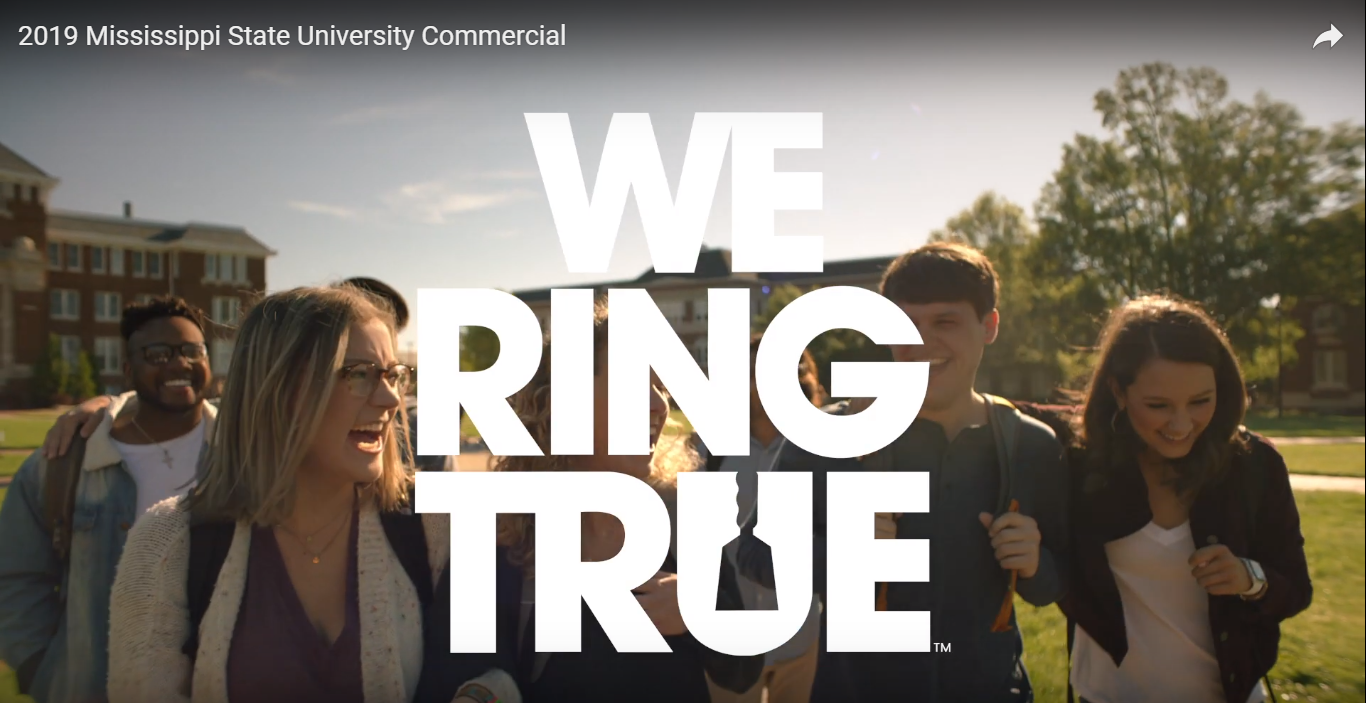
2. Tutorial:
Let’s face it, international students have a lot of questions, be it on the admission process, or be it on the course offerings available. Tutorial videos are a great way to help students find the answers to even the smallest queries that they might have.
Even Google prefers videos in the snippets its algorithm chooses to feature. Making videos to answer user queries could be hugely beneficial to your Google rankings.
Here is one such video by the University of Alberta that guides its students on how to choose subjects and register for their desired course.
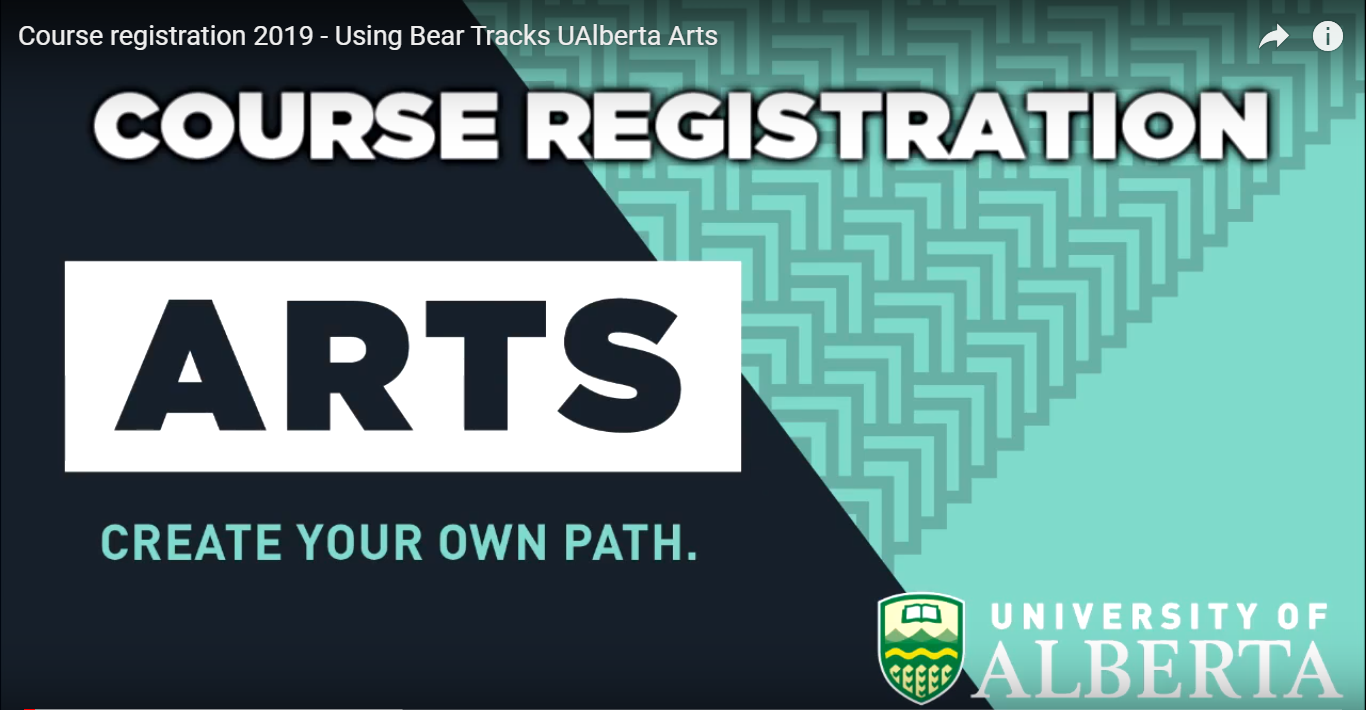
3. Testimonial:
The purpose of these videos, in one word, is credibility. Imagine trying to promote your university in far flung international student recruitment markets like Vietnam, and having a bank of testimonials from Vietnamese students in order to do so. Testimonials may not just be limited to alumni, grads or achievers, even professors, visiting faculties or corporate partners too could be sharing testimonials.
The aim of such videos is to show an institute’s quality by attesting experiences of already studying students and teachers. The idea is to add credibility to the services provided by the university.
Take a look at this video by RMIT Australia that comprises of multiple testimonials by the students on how their experience at RMIT has been satisfactory.
4. Interviews:
Videos that are created from the perspective of an interview are best used when dealing with a long string of questions. Videos created in this format are a great way to leverage the popularity of a visiting speaker or even help prospective students interact with your admissions department.
By making this type of video, a university can produce higher engagement by leveraging the interviewee’s reputation.
An interview conducted by Richmond University with Princeton Professor Peter Singer who talks about bioethics, is an excellent example for this category.

5. VLOG:
VLOG is a portmanteau of the words video and blog. It aims at documenting an individual’s experience or general thoughts in the form of videos. Look at this VLOG that showcases ‘A Day in a Life” of an Edinburgh University student.
While VLOGS are most used by students, leveraging them to promote your brand is a crucial way to ensure greater engagement and penetration in your target markets. Generally VLOGS are facilitated by students, but imbibing these into marketing can turn out to be a fair deal of choice as they attract a lot of traffic.
6. Animation:
Always a wonderful way to showcase information; animated videos, when made well, always tend to be engaging. They are especially useful when depicting hard-to-grasp subjects. It is important to note that there are a variety of ways in which we could be creating animated videos. Right from ready-made illustrations, to creating them from scratch, the means are endless.
University of Lincoln’s promo video is a story based CTA that is a visual treat for the viewers.

7. Live Streaming:
Going live, once the domain of broadcasters, is now available to everyone with an internet connection and a social media account. Having live stream videos are a wonderful way of engaging an existing audience, or even to reach out to an altogether new one.
A major benefit of conducting such videos is that they can be re-purposed while promoting your brand name. This possible that live videos are saved on platforms like Facebook as videos to be viewed at a later date. Live stream are also largely used during events.
Here is one such example of a live streamed video by University of Adelaide.
8. Ads:
Video ads have been shown to get a lot more engagement than static images. Moreover, they impact the favourite domain of marketers everywhere – the ROI. It is important to note, however, that depending upon your platform the duration of your video ad would also change. For example, Facebook video ads work best when they are in the range of 5-10 seconds. YouTube on the other hand offers different duration options for ads to be run on their platform.
Watch this advertisement by University of Canterbury highlighting their motto “Be prepared to Change.”
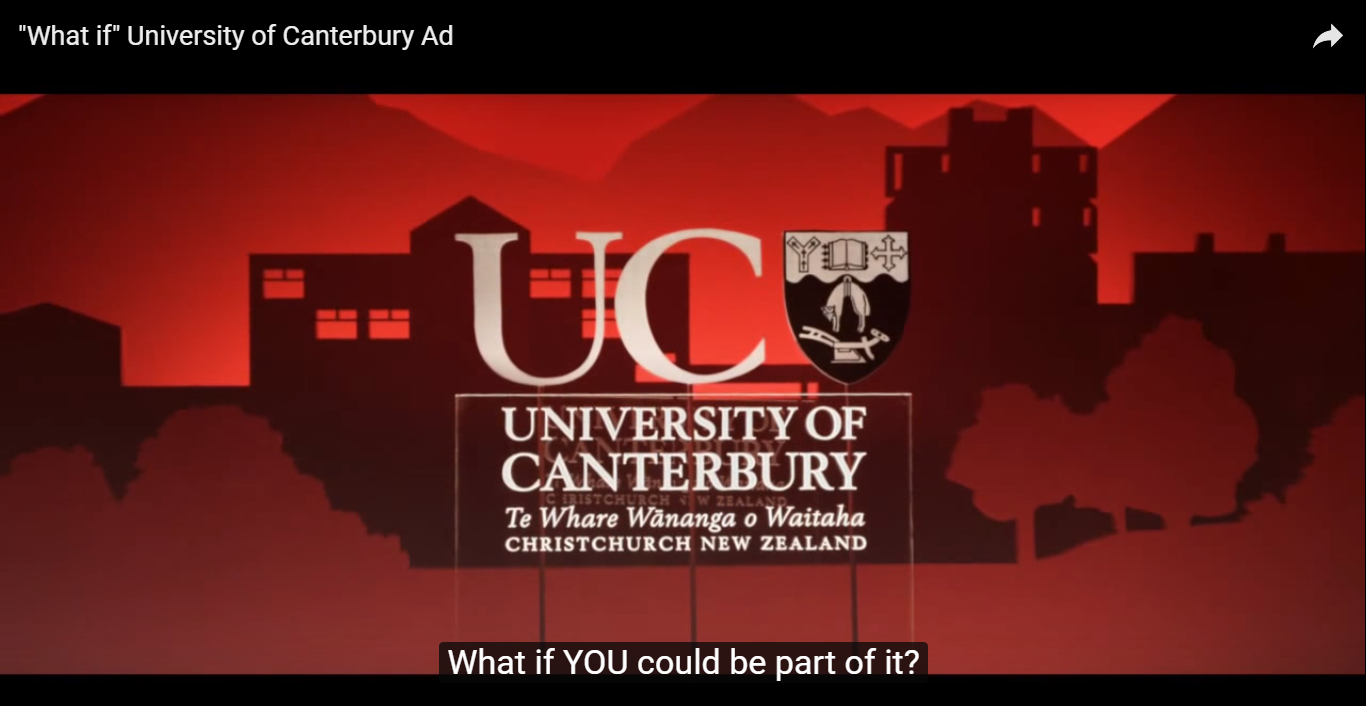
KEY ELEMENTS OF VIDEO MARKETING
Choosing a specific type of video you wish to create is the first step in this process. But a good video not promoted is akin to not having a video at all. One of the most, if not the most, important factors of video marketing is the second word in the term, marketing. Creating a successful video marketing campaign begins with a great video and ends in the execution of a flawless promotional strategy.
Here are some ways that you could be making sure your video promotions are on point.
1. Organized Planning:
The first and foremost requirement for making a video is to have an organized structure which would determine the entire course of action for this journey. To trigger a long-term impact among your audience through the video, the plan must have everything laid out in detail, right from timelines, to platforms, to the budgets allocated for each.
So the flow goes like this –
- Deciding upload dates for each piece
- Choosing the type of video
- Assigning tasks to script writers, videographers, actors and editors
- Shoot
- Upload
- On to the next project
2. Emotional Connect:
The biggest impact that a video has on its target audience is emotional. It could bring a smile to their face or a tear in their eyes, either way, if it has managed to elicit a reaction, your video has done its job. Creating a video with a strong emotional connect becomes prima facie for your entire strategy.
This emotional connect could very well be your university’s tagline, much the same way Auburn University have done it here.
3. Call-To-Action:
Having a CTA that not only encapsulates the conclusion of the video but also manages to encourage engagement is idea. A call to action usually appears at the end of the video, and is cushioned on the back of the video’s primary tagline.
To identify that, first you need to identify the target audience. For universities and other educational institutes it is the student class aging from 18-30.
‘A Doubled Magic’ highlights the glamorous life of New York City, which appeals to the said target audience.

Where this is a subtle CTA, there are other ways you can induce CTAs which are more direct in nature.
A page at the starting or ending of the video telling the viewers what to do next, say for example suggesting them to watch other videos by your university is one option.
The second being auditory requests, like click the link in bio or visit our website.
4. On-Point Intros:
The first impression of the video is created within the first couple of seconds itself. This makes the introduction of your video crucial in retaining interest of your target audience. It is the intro that will determine whether the viewer will watch it till the end. The aim of an intro is to tell your audience upfront what it is about.
However, the size of an intro depends on the total length of the video.
Customizing them in a crisp and attractive way is what you should be looking at while working on the script.
Having on-point intros like the one in ‘Where Legends Are Made’ by University of Alabama, will produce greater engagement resulting in greater ROI.

5. Visual Branding:
A video for the sake of a video definitely does not cut it in an age when people have become familiar with high quality videos and story lines. It is the way the text is juxtaposed with the visuals that conveys the branding of the university in the video. It is important that the brand presence is conveyed adequately in the video.
This can be managed by featuring the brand at the beginning, the end or throughout the video, depending upon the type of video. Moreover, there can be on-ground options utilized in order to give the video adequate branding of the university sharing it. This could be done in the form of backdrops, strategically placed products or a number of other options.
VIDEO MARKETING PLATFORMS
YouTube itself reports over a billion hours of video being viewed every day. With such a massive proliferation of video content, it becomes very important to not only have video content on your social but also to have highly clutter breaking content at the same time.
At the same time, it is important to understand that relying on just one platform to promote your video may not give you the kind of results you are hoping for. On the other hand, a marketing strategy that makes room for multiple platforms including conventional social media always tends to work better.
Mentioned below are some of the most popular video marketing platforms which can be used by the universities –
1. YouTube
YouTube has 2 Billion logged-in monthly users.
81% of 15-25 year-olds in the U.S. use YouTube.
Almost 15% of YouTube’s site traffic comes from the U.S.
People upload 500 hours of video every minute.
Each visitor spends 11m 24s per day on YouTube, on average.
70% of what people watch on YouTube is determined by its recommendation algorithm.
Each visit to YouTube involves 6.5 page views, on average.
Over 70% of YouTube views are on mobile.
In the U.S. alone, YouTube will make $5.5 Billion in advertising revenue in 2020.
YouTube is the biggest online platform for videos. The influence of the same on higher education industry is undeniable as 86% of universities have a YouTube presence. And that is just one platform!
According to a recent study, 59% of Gen-Zers prefer to learn by watching YouTube videos as they have been an integral part of their learning journey as well as overall development.
The rise of Vlogs is also a major factor contributing to the overall popularity of YouTube. Massachusetts Institute of Technology is believed to have one of the most organized YouTube accounts. This makes navigating through a bunch of videos easier for the viewers.
When creating a YouTube channel there are some things that should always be kept in mind:
Content and audience targeting – This will inform your content creation strategy to a great extent.
Google Analytics – Analytics are the best way to identify where your videos are working and are a great means of identifying specific audience sets that you could be targeting.
SEO – Setting up the search engine optimization of your YouTube pages is considerably simple. And this ensures that even the videos you create and even your channel are ranking right up there.
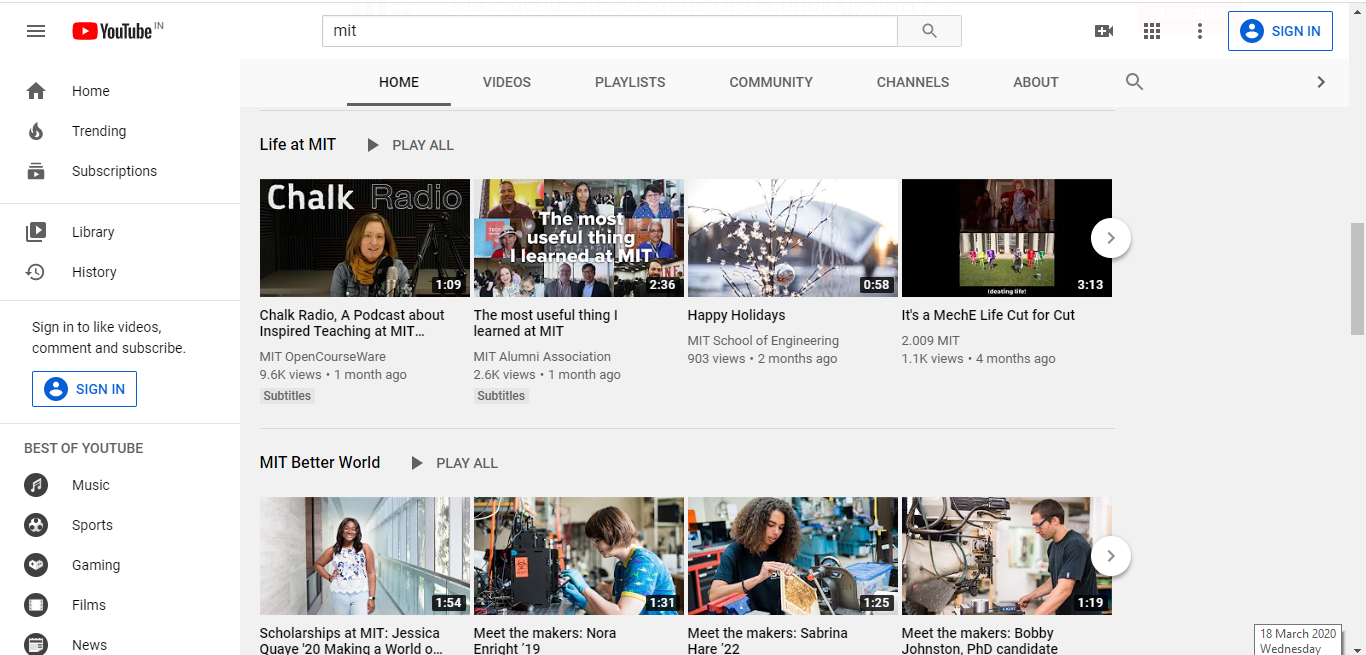
2. TikTok
A fairly recent addition to the social media universe, it has rapidly become popular among students. One of the fastest growing social media platforms in the world, it’s mobile friendliness is a big reason for its wildfire like spread. In fact, 60% of TikTok users are Gen-Zers.
The platforms comes loaded with creative features that allow users to make short videos with music and filters. It is this that makes TikTok as addictive as it is.
The aim of this application is to encourage user creativity via videos that bring it at par with the already famous platforms like YouTube and Instagram. And with over 800 million monthly active users, it is well on its way to become just that. The only limitation of this platform is that the videos can only be up to 60 seconds long. On the flipside, a TikTok user spends 52 minutes on an average on the platform.
Various colleges and universities have already begun using TikTok as a recruitment tool.
Rochester Institute of Technology is one such example, their posts are mainly about highlighting the student life on campus and in doing so they give their prospective students a glimpse of what it will be like for them if they choose Rochester.
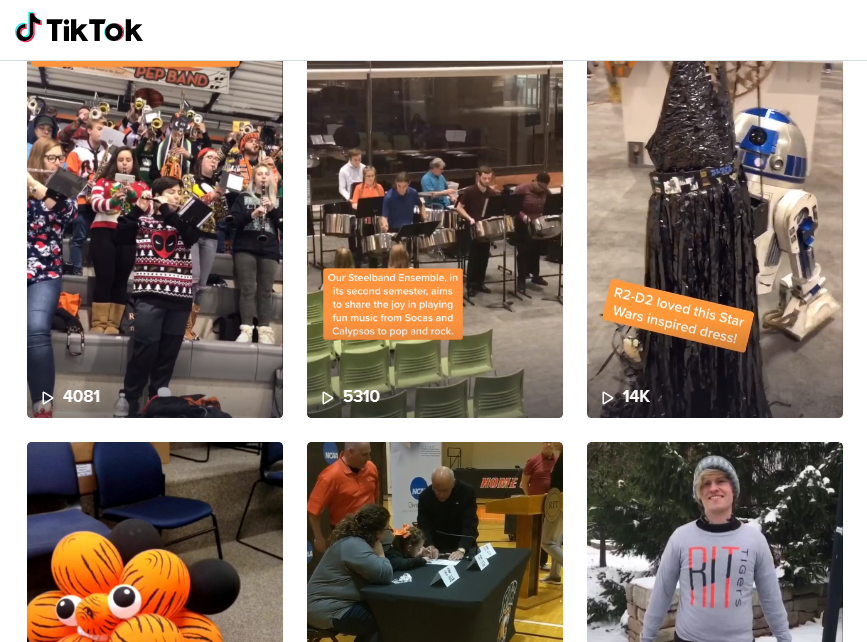
3. IGTV:
Instagram is a medium largely dependent on images, and with the addition of IGTV a couple of years ago, its popularity has only soared. This recently launched feature of Instagram has become the go-to option for videos for the massive Instagram community.
Take a look at this IGTV video by Maastricht University which covered their alumni day.
4. Snapchat:
90% of Snapchat users are 13-24 years old! And with over 200 million daily active users, the platform continues to be relevant. However, you might want to look at the countries it is most popular in before you dive into Snapchat promotion. India is a huge market for Snapchat which makes it great for international student recruitment. On the other hand, US too is the top market for this video platform, giving it relevance even as a community outreach.
The biggest highlight of Snapchat is that it provides ‘in the moment insights’. This feature can be used by universities to showcase their campus as well as events.
Snapchat’s geofilter is the most used and most loved.
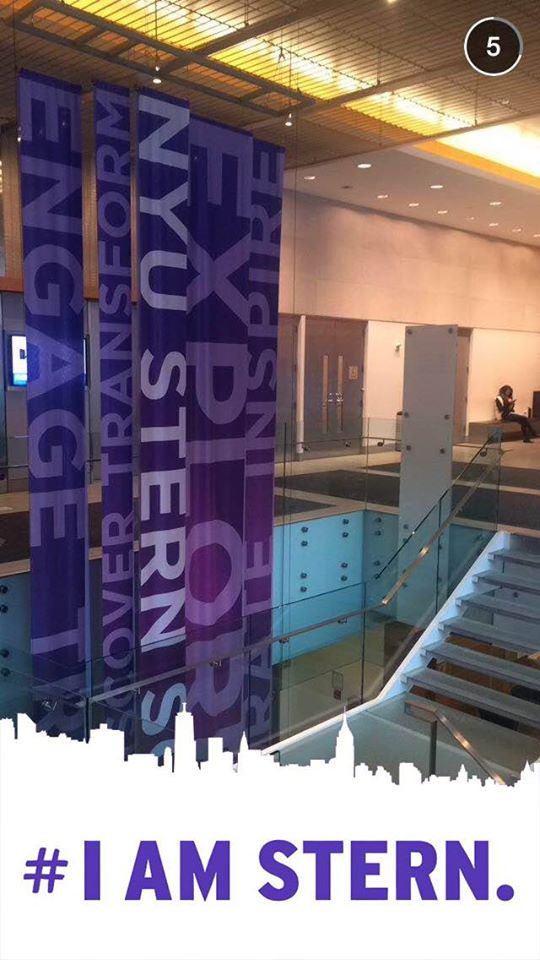
The University of Michigan was one of the first universities to launch a Snapchat account in 2014.
5. Vimeo:
Launched around the same time as YouTube, Vimeo branded itself as a destination for the more serious video creators around. Today it is home to over 50 million creators, with more being added every day. Perceived as the destination for more serious video consumers, Vimeo could be an interesting platform to utilize for your video marketing strategy.
This is one of the few video platforms around that allow for generating index videos with an outlined markup. Moreover it offers the opportunity for designed data required to rank onSERPs a crucial component of your video marketing strategy.
Check out University of Essex’s Vimeo page.
Video marketing can no longer be ignored by anyone, especially by international education players around the world. Having strong video content could be the difference between a successful marketing strategy and an average one. With the world and its cats in isolation, the only means of reaching the outside world has become the internet. And what do you suppose would be the content most consumed at a time like this? Rhetorical questions notwithstanding, video creation and marketing are crucial at a time like this for universities to reach out to students looking to be assuaged about the situation.
Hue’s film-making and editing team have been working with the international education sector for some time now. With this experience comes the understanding of the industry. This coupled with our expertise in social media and digital promotion ensures that you will have a robust strategy to promote the videos we create for you.






No Comments